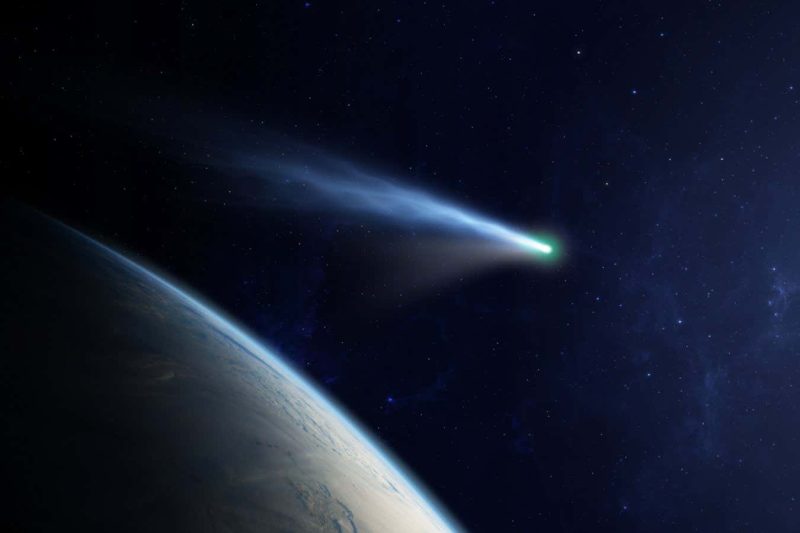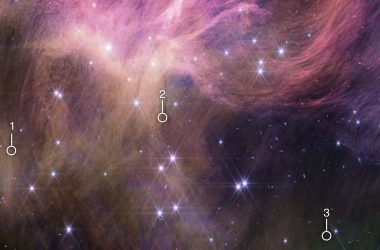Comets and Life’s Ingredients
Comets may play a vital role in delivering life-sustaining components to neighboring planets. Amino acids and organic compounds, essential for life, could be transported by comets to planets with nearby neighbors. However, the ability of comets to deliver these essential components depends on the planetary system’s arrangement.
There are theories suggesting that organic molecules reached Earth through comet impacts. However, comets typically travel at high speeds in space, posing a challenge for the survival of these crucial compounds upon collision with a planet.
Richard Anslow, along with researchers from the University of Cambridge, conducted simulations to explore how planetary systems can decelerate comets, reducing their impact speeds to preserve the organic compounds. In favorable scenarios, a slow comet collision could leave behind a prebiotic soup, forming a “comet pond” within the impact crater.
Key Findings
- Two types of planetary systems can slow down comets by 5 to 10 kilometers per second:
- Systems with relatively massive stars, where the slower orbital speeds can decelerate comets.
- Planetary systems with closely spaced rocky planets, enabling comets to lose speed while maneuvering among them.
- Ideal conditions for a planetary system include a low-mass planet like Earth orbiting a high-mass star, with neighboring rocky planets to facilitate comet interaction.
- Understanding the arrangement of planetary systems with potential signs of life can provide insight into the origins of life on other planets, further enhancing our comprehension of life’s formation on Earth.
Insights and Implications
Anslow suggests that the discovery of life on other planets could offer valuable clues about its origins based on the system’s configuration. This could significantly contribute to our limited knowledge of Earth’s own life formation.
Topics Explored
Planetary Systems, Comets, Life’s Origins, Organic Compounds, Planetary Impact








